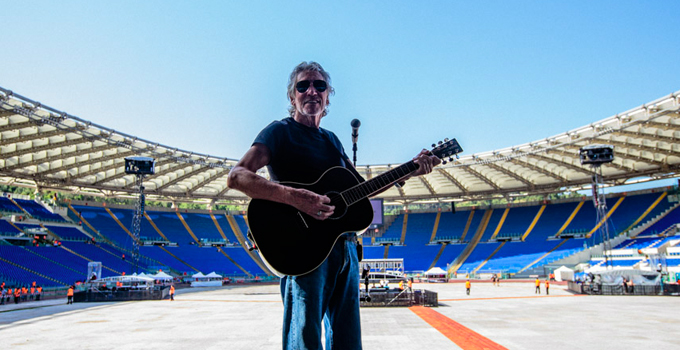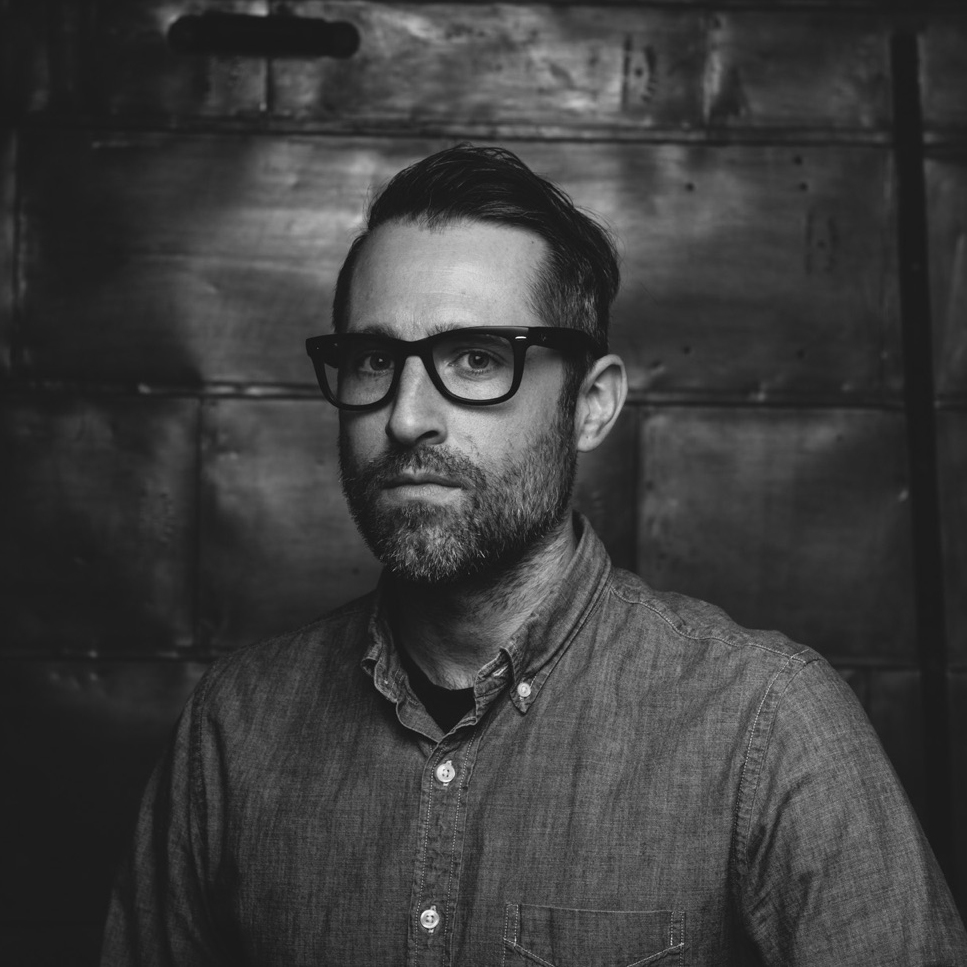Roger Waters Explains the Imagery and Symbolism Behind The Wall Live, His Update of the Pink Floyd Classic

This is an excerpt from the Holiday 2013 issue of Guitar World. For the rest of this story (plus interviews with the four guitarists behind The Wall Live) and more — including Black Oak Arkansas, the Winery Dogs, Marty Friedman, a guide to the most incredible concerts and roadshows in rock and metal history, a holiday gift guide and John Petrucci's monthly column — check out the Holiday 2013 issue at the Guitar World Online Store.
The Great Wall: The Wall Live is one of the biggest and most ambitious tours in the history of rock. In this exclusive interview, Roger Waters explains the imagery and symbolism behind his update of the Pink Floyd classic.
“Benvenuto, bambini!” Roger Waters exclaims through his microphone to the line of children excitedly walking toward the stage inside Rome’s massive Stadio Olimpico.
On this blistering afternoon in late July, the former Pink Floyd leader and his band are in the middle of the soundcheck for tonight’s show, at which they’ll perform Floyd’s classic 1979 double-album,
The Wall
, for 50,000 Italian fans.
Waters stops the rehearsal to welcome the children, who will appear with him onstage later tonight during the famous “We don’t need no education” refrain from “Another Brick in the Wall (Part 2).” As with every performance of The Wall Live, the kids have been recruited from local youth organizations.
They receive their stage instructions and soon begin yelling, “Hey! Teacher! Leave them kids alone!” at the huge, menacing inflatable schoolmaster puppet that descends from the rigging above the stage.
Waters smiles and dances in sync with the kids. Even in this casual pre-show setting, his vocals are strong, possessing much of the same vulnerability and theatrical range that they had when
The Wall
was first released. Wielding his legendary black Fender P-Bass, Waters embellishes the song’s funky bassline with the assuredness and finesse reserved for only the most seasoned musicians.
Although tonight’s show arrives three years and nearly 200 dates into The Wall Live world tour, Waters’ excitement is palpable. In fact, his commitment to this larger-than-life production is so singular that he still soundchecks every concert to make sure the sonics and stage show—like tonight’s giddy children—are performance ready. Waters has a longstanding reputation for being a hyper-attentive, if downright controlling, musical director, factors that contributed to the myriad inter-band tensions that led him to leave Pink Floyd in 1985.
But a fierce creative drive isn’t the only force fueling his passion for this new production. For Waters,
The Wall
has become a vehicle to convey what he sees as vital messages about a host of modern societal plagues, from greed and corruption to nationalism and religious supremacy. In its original conception,
The Wall
was a way for him to exorcise personal demons: his feelings surrounding the loss of his father in World War II, the severity of the English school system and the isolation and dysfunction of rock stardom, among others.
But Waters, now approaching his seventies, has come to terms with his past, and the current, contemporized production of The Wall Live demonstrates his concerns with how the forces behind these ills infiltrate society to the detriment of many.
“It took me a long time to get over my fears,” he wrote in a letter to fans in 2010 explaining why he was resurrecting The Wall tour. “It has occurred to me that maybe the story of my fear and loss with its concomitant inevitable residue of ridicule, shame and punishment, provides an allegory for broader concerns: nationalism, racism, sexism, religion, whatever! All these issues and ’isms are driven by the same fears that drove my young life.”
It was around the 30th anniversary of
The Wall
that Waters decided to update the show’s themes to address these global issues. He assembled a world-class team of musicians, video artists, set designers and projectionists to help him expand the project’s scope as well as deliver the live show that Pink Floyd failed to realize when they first attempted to perform the record in 1980. In addition to presenting the classic music—brought to life by his band of all-star musicians, including guitarists
,
, Snowy White and Jon Carin—the updated show delivered a high-tech multimedia narrative unrivaled by any rock show ever staged.
Musically, The Wall Live follows the arc of the original 1979 album. But for the new production, Waters has added two more songs that didn’t make the original release: “What Shall We Do Now?” and “The Last Few Bricks.” The show also features a newly written acoustic coda, “The Ballad of Jean Charles de Menezes,” which honors a Brazilian man shot to death in 2005 by London police after being misidentified as a terrorist. In context with the 26 tracks of the original album, the new tunes contribute to the dramatic exposition while infusing the familiar ensemble of songs with freshness.
Photo: Sean Evans
For the rest of this story (plus interviews with the four guitarists behind The Wall Live) and more — including Black Oak Arkansas, the Winery Dogs, Marty Friedman, a guide to the most incredible concerts and roadshows in rock and metal history, a holiday gift guide and John Petrucci's monthly column — check out the Holiday 2013 issue at the Guitar World Online Store.

Get The Pick Newsletter
All the latest guitar news, interviews, lessons, reviews, deals and more, direct to your inbox!
Brad is a Brooklyn-based writer, editor and video producer. He is the former content director of Revolver magazine and executive editor of Guitar World. His work has appeared in Vice, Guitar Aficionado, Inked and more. He’s also a die-hard Les Paul player who wishes he never sold his 1987 Marshall Silver Jubilee half stack.
“This particular way of concluding Bohemian Rhapsody will be hard to beat!” Brian May with Benson Boone, Green Day with the Go-Gos, and Lady Gaga rocking a Suhr – Coachella’s first weekend delivered the guitar goods
“I was writing songs from eight years old, but once I got a guitar I began to deeply identify with music… building an arsenal of influences”: How Lea Thomas uses guitars her dad built to conjure a magic synthesis of folk, pop and the ethereal

